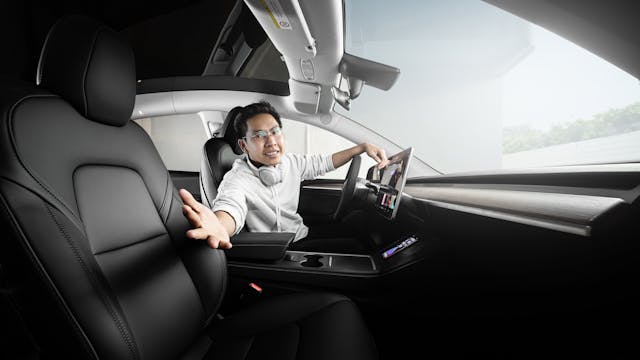We’ve all encountered them on the road—the drivers who seem to be in a constant rush, weaving in and out of traffic, tailgating, and honking impatiently at the slightest delay. Aggressive driving behavior not only poses a danger to oneself but also to other motorists, pedestrians, and cyclists. Yet, identifying whether you exhibit aggressive driving tendencies can be challenging, as it often manifests subtly in everyday behaviors behind the wheel. Here are some key signs to help you determine if you might be an aggressive driver and what steps you can take to address these behaviors.
Tailgating:
One clear indicator of aggressive driving is tailgating—driving too closely behind the vehicle in front of you. This behavior not only increases the risk of rear-end collisions but also contributes to feelings of intimidation and stress for the driver being tailgated. If you find yourself habitually driving too closely to other vehicles, especially in an attempt to pressure them to speed up or move out of your way, you may be exhibiting aggressive driving behavior.

Excessive Speeding:
Another common trait of aggressive drivers is excessive speeding. While it’s natural to want to reach your destination efficiently, consistently driving well above the speed limit or racing through traffic signals can endanger yourself and others on the road. If you frequently find yourself disregarding speed limits, ignoring traffic signs, or engaging in competitive driving with other motorists, you may need to reassess your driving habits.
Frequent Lane Changes:
Aggressive drivers often exhibit a pattern of frequent lane changes, zigzagging through traffic in an attempt to gain a perceived advantage. Constantly switching lanes without signaling or cutting off other drivers can create chaos and increase the likelihood of accidents. If you find yourself impulsively changing lanes, especially without checking blind spots or using turn signals, it may be a sign of aggressive driving behavior.
Angry Gestures and Verbal Outbursts:
Aggressive drivers often express their frustration and impatience through angry gestures, honking, shouting, or even aggressive behavior towards other road users. If you frequently find yourself reacting angrily to perceived slights or inconveniences on the road, it’s essential to recognize that such behavior not only escalates tensions but also compromises your safety and the safety of others.
Racing through Yellow Lights:
Disregarding traffic signals, especially when it comes to yellow lights, is another hallmark of aggressive driving. Instead of slowing down to stop safely at a yellow light, aggressive drivers often speed up to “beat the light,” risking collisions with vehicles entering the intersection from other directions. If you find yourself habitually racing through yellow lights or ignoring other traffic signals, it’s crucial to acknowledge the potential consequences of such reckless behavior.
How to Recognize These Aggressive Driving Tendencies in Yourself?
The first step is awareness—acknowledging that your behavior behind the wheel may pose a danger to yourself and others. Once you’ve identified the problem, you can take proactive steps to address it. Consider practicing mindfulness techniques to stay calm and focused while driving, allowing for greater patience and empathy towards other road users. Additionally, avoid engaging in competitive or confrontational behavior on the road, and prioritize safety above all else.
Seeking out defensive driving courses or counseling can also help you develop safer driving habits and manage stress or anger-related issues that may contribute to aggressive driving behavior. If you unfortunately get involved in a catastrophic car accident, a McAllen injury lawyer can help you navigate the complexities of aggressive driving car accidents. Remember, every driver has a responsibility to prioritize safety and respect on the road, and by recognizing and addressing aggressive driving tendencies, you can contribute to a safer and more harmonious driving environment for everyone.




